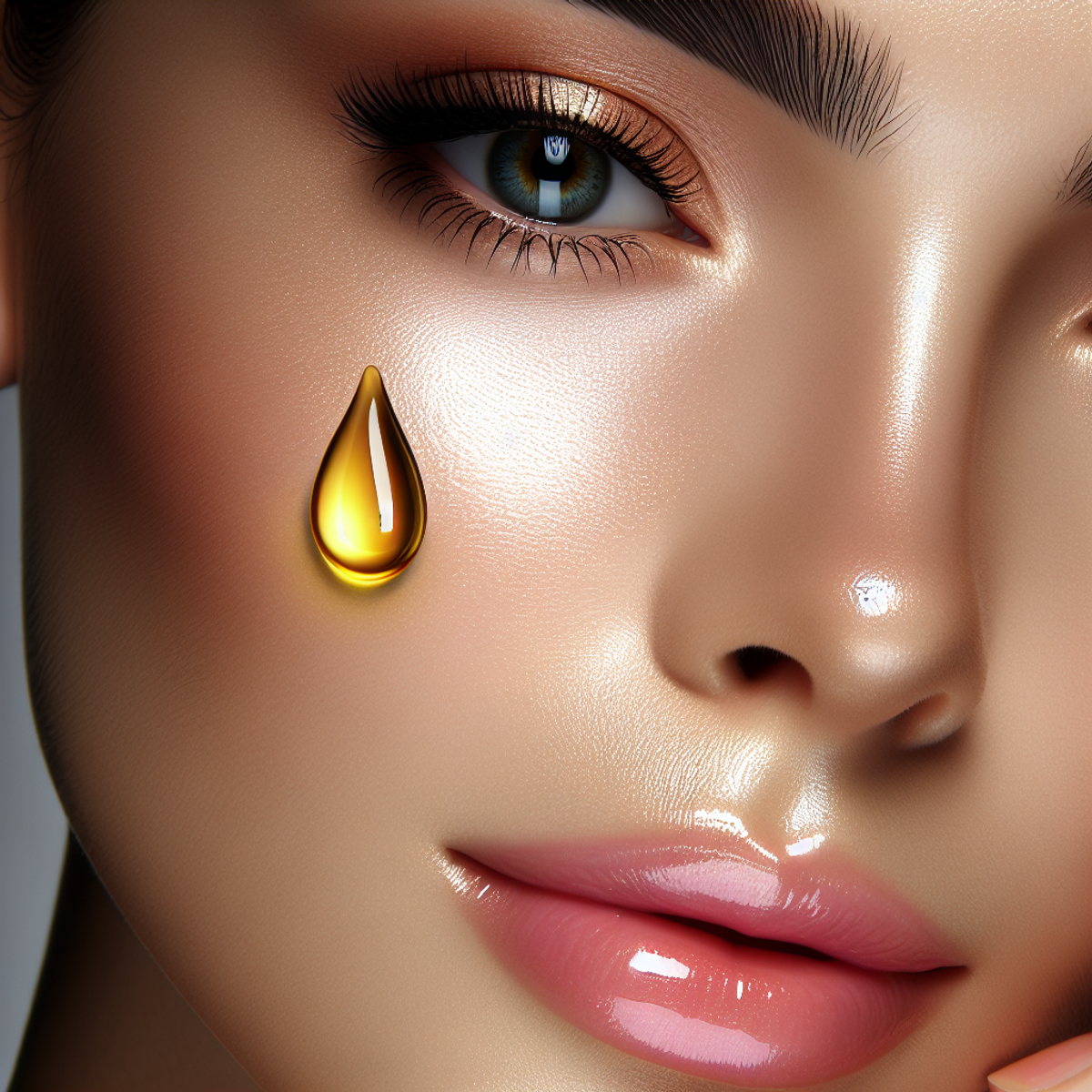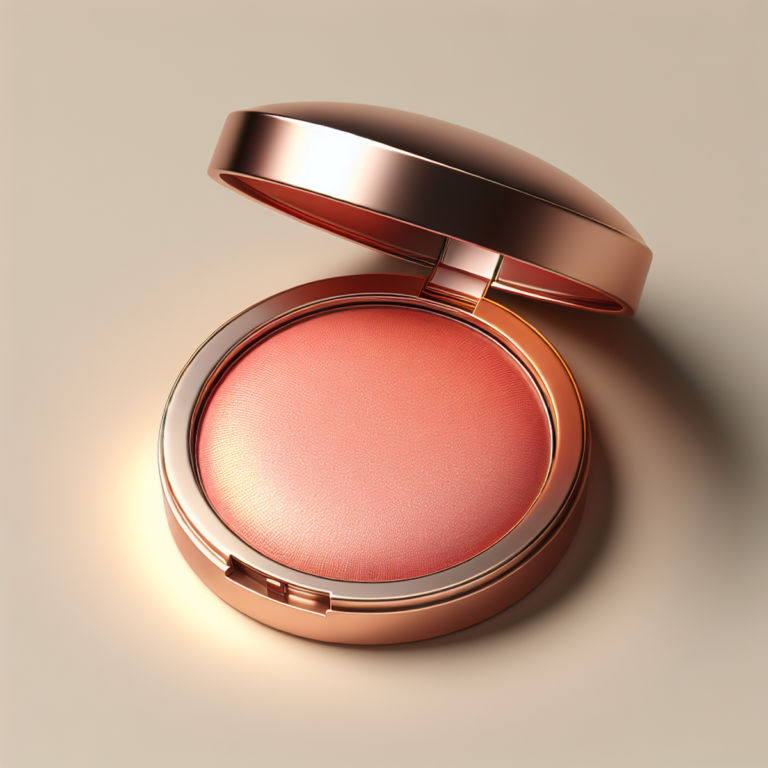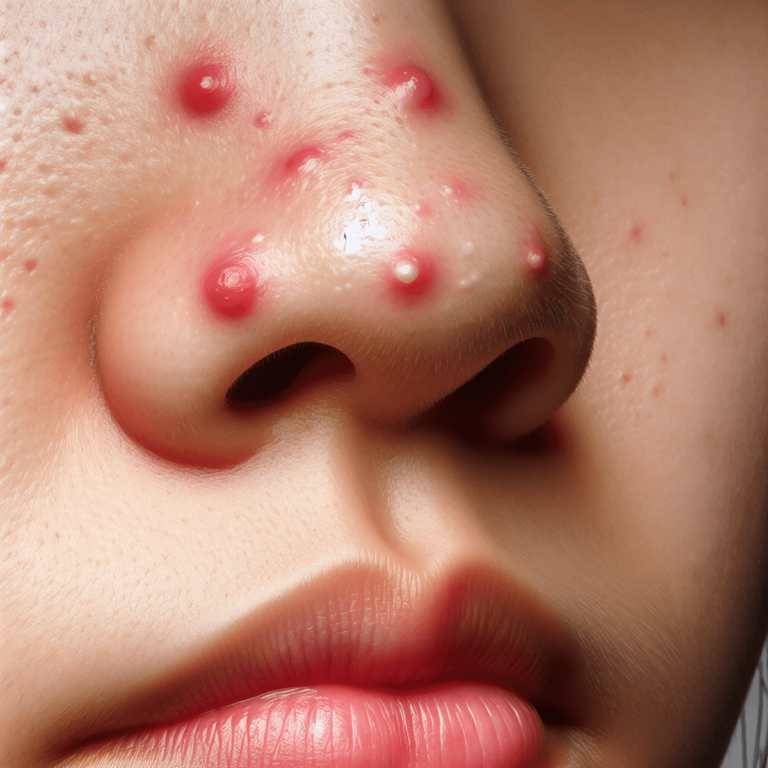The Best Skincare Routine for Oily Skin, According to Derms

Introduction
Oily skin can be a challenge to manage. It tends to produce excess sebum, which leads to shine, clogged pores, and acne. But don’t worry! With the right skincare routine, you can achieve a healthy and balanced complexion.
In this article, we will discuss the best skincare routine for oily skin recommended by dermatologists, along with expert tips and product recommendations.
Key Takeaway: Following a proper skincare routine is essential for managing oily skin and preventing common issues like acne and shine. By incorporating the right products and techniques into your daily regimen, you can control oil production and maintain a clear complexion.
It’s important to note that everyone’s skin is unique, so it’s always a good idea to consult with a dermatologist for personalized advice. Especially if you have severe oily skin concerns or are struggling with persistent acne, they can provide tailored recommendations to address your specific needs.
Now let’s dive into understanding oily skin and how it can be effectively managed through a targeted skincare routine.
Understanding Oily Skin
Oily skin is a common skin type that occurs when the sebaceous glands in the skin produce too much sebum, an oily substance. While sebum is necessary to keep the skin moisturized and protected, excess oiliness can lead to various issues.
Factors That Contribute to Oily Skin
Several factors can contribute to excess oiliness in the skin:
- Hormonal imbalances: Hormonal changes during puberty or hormonal disorders can stimulate the sebaceous glands to produce more sebum. In fact, hormones play a significant role in acne development.
- Genetics: Your genes also contribute to determining whether you’ll have oily skin or not, as some studies suggest.
The Effects of Sebum on the Skin
Sebum has both positive and negative effects on the health and appearance of the skin:
- Moisturization: Sebum helps moisturize the skin and maintain its natural barrier function. It prevents excessive water loss and keeps the skin supple and hydrated.
- Clogged Pores: However, too much sebum can lead to clogged pores, which can result in acne breakouts and blackheads.
Excess oiliness also contributes to a shiny complexion, especially in the T-zone area (forehead, nose, and chin), where sebaceous glands are more active. The shine is caused by light reflecting off the excess oil on the skin’s surface.
Misconceptions About Oily Skin
It’s important to understand that having oily skin doesn’t mean your skin is unhealthy or dirty:
- Oily skin tends to age more slowly compared to other skin types because it has more natural moisture and protection.
- However, proper skincare is still necessary to manage oily skin and prevent common issues like acne and shine.
Tips for Managing Oily Skin
To effectively manage oily skin, follow these tips:
- Use a gentle cleanser: Cleanse your face twice a day with a gentle cleanser to remove excess oil and impurities. Avoid harsh or drying cleansers that can strip away too much sebum, as this may cause the skin to produce even more oil.
- Apply a lightweight moisturizer: Contrary to popular belief, oily skin still needs moisturization. Look for lightweight, oil-free moisturizers that won’t clog pores but will provide hydration.
- Use products with salicylic acid: Incorporate skincare products containing salicylic acid into your routine. Salicylic acid helps exfoliate the skin and unclog pores, reducing the occurrence of acne breakouts. It also has anti-inflammatory properties, which can help calm irritated skin.
- Avoid heavy and pore-clogging ingredients: Stay away from skincare products that contain heavy oils (such as vegetable oil, coconut oil, cocoa butter) or occlusive ingredients (like petroleum jelly and shea butter), as these can exacerbate oiliness and clog pores.
- Protect your skin from the sun: Use a broad-spectrum sunscreen with at least SPF 30 daily to protect your skin
The Best Skincare Routine for Oily Skin: A Dermatologist’s Guide
1. Cleansing for Oily Skin
When it comes to developing a skincare routine tailored for oily skin, effective cleansing is the crucial first step in managing excess oil production and preventing common issues such as acne and shine.
Key Points to Address:
- Choosing the Right Cleanser: Opt for a gentle, non-abrasive cleanser specifically formulated for oily or acne-prone skin. Look for ingredients like salicylic acid, glycolic acid, or benzoyl peroxide, which help to unclog pores and reduce oiliness without over-drying the skin.
- Cleansing Frequency: It’s essential to cleanse your face twice a day – once in the morning and once in the evening – to remove excess oil, sweat, and impurities that accumulate throughout the day and overnight. However, avoid excessive washing, as it can strip the skin of its natural oils and potentially trigger increased sebum production as a compensatory mechanism.
- Application Technique: When cleansing oily skin, use lukewarm water instead of hot water, as hot water can exacerbate oil production. Gently massage the cleanser onto damp skin using circular motions, paying particular attention to areas prone to excessive oiliness, such as the T-zone (forehead, nose, and chin).
- Avoid Harsh Ingredients: Steer clear of harsh or abrasive scrubs that can irritate oily skin and lead to increased oil production. Instead, opt for gentle exfoliating cleansers with smooth microbeads or chemical exfoliants that help to remove dead skin cells and prevent clogged pores without causing inflammation.
- After-Cleansing Care: Following cleansing, pat your skin dry with a clean towel and proceed with the next steps of your skincare regimen promptly to lock in moisture before the skin has a chance to produce excess oil in response to dryness.
By incorporating these specific considerations into your cleansing routine, you can effectively manage oily skin without compromising its overall health and balance.
2. Exfoliating Oily Skin
Exfoliation is an essential step in the best skincare routine for oily skin. It involves removing dead skin cells and unclogging pores, which can help prevent breakouts and improve the overall texture of the skin. Regular exfoliation can be highly beneficial for oily skin, as it helps to control excess oil production and keep the skin looking fresh and radiant.
Here are some important points to consider when incorporating exfoliation into your skincare routine for oily skin:
- Choose the right exfoliator: When selecting an exfoliator for oily skin, opt for products that contain gentle chemical or enzymatic exfoliants rather than harsh physical scrubs. Chemical exfoliants such as alpha hydroxy acids (AHAs) like glycolic acid or beta hydroxy acids (BHAs) like salicylic acid are particularly effective for oily skin. These ingredients work by dissolving the bonds between dead skin cells, allowing them to be easily sloughed off. You can find more information on how to choose the right exfoliator from this healthline article on exfoliation.
- Frequency matters: It’s important to find the right balance when it comes to how often you exfoliate your oily skin. Over-exfoliating can lead to irritation and dryness, which can actually trigger more oil production. As a general guideline, aim to exfoliate 1-2 times per week. If your skin can tolerate it, you may increase the frequency slightly, but always listen to your skin’s needs and adjust accordingly. The American Academy of Dermatology provides some great insights about safely incorporating exfoliation into your skincare routine.
- Be gentle: Even though you may have oily skin, it’s still important to approach exfoliation with a gentle touch. Avoid excessive scrubbing or using harsh brushes that can cause micro-tears in the skin. Instead, apply a small amount of your chosen exfoliant onto clean fingertips and gently massage it onto damp skin using circular motions. This WebMD article on exfoliating hands offers some useful tips on how to be more gentle during the process.
- Consider leave-on exfoliants: In addition to physical exfoliation, leave-on exfoliants can be a great option for oily skin. These products are typically in the form of toners or serums and contain low concentrations of AHAs or BHAs. They work by gently dissolving dead skin cells and promoting cell turnover. Leave-on exfoliants are convenient to use and can provide long-term benefits for oily skin when incorporated into your daily skincare routine. CeraVe offers some expert tips on how to use leave-on exfoliants without disrupting the skin barrier.
- Don’t forget to moisturize: It’s a common misconception that oily skin doesn’t need moisturization. However, skipping moisturizer can actually lead to increased oil production as the skin tries to compensate for the lack of hydration. After exfol
3. Moisturizing Oily Skin
Moisturization is an important step in any skincare routine, even if you have oily skin. Many people think that using moisturizers will make their skin even oilier, but this is not true. In fact, moisturizing oily skin is necessary for keeping it healthy and balanced. Here’s why:
- Balancing Sebum Production: When you have oily skin, it may seem logical to skip moisturizer altogether because you don’t want to add more oil to your face. However, the opposite is true. When you don’t moisturize, your skin can actually produce more oil to make up for the lack of hydration. By using a lightweight, oil-free moisturizer made specifically for oily skin, you can help control sebum production and prevent excessive greasiness.
- Hydrating the Skin: Oily skin can still be dehydrated, which means it lacks water rather than oil. Dehydration can weaken your skin barrier, leading to more oil production and other issues like acne and inflammation. By adding a moisturizer to your skincare routine, you give your skin the moisture it needs to stay plump, soft, and less prone to breakouts.
- Protecting the Skin: A good moisturizer creates a protective layer on the surface of your skin. It seals in moisture while keeping out external irritants and pollutants that can make oily skin problems worse. Look for moisturizers with ingredients like glycerin and hyaluronic acid, which attract water to the skin and provide long-lasting hydration without blocking pores.
When choosing a moisturizer for oily skin, remember these tips:
- Oil-Free Formulas: Use products that are free of oils or won’t clog your pores. These formulas are specifically made to hydrate your skin without adding extra oil.
- Lightweight Texture: Pick moisturizers that feel light on your skin and absorb quickly. Gel-based or lotion formulas are usually a good choice for oily skin because they provide enough moisture without leaving a heavy or greasy residue.
- Matte Finish: If you’re worried about looking shiny, try moisturizers with a matte finish. These products can help control excess oil throughout the day and give your skin a more balanced appearance.
- SPF Protection: Don’t forget to use a moisturizer with SPF to protect your skin from the sun. Sunscreen is important for everyone, including those with oily skin. Look for lightweight and non-greasy options that offer broad-spectrum protection.
In addition to moisturizing, there are other treatments you can add to your skincare routine to target specific oily skin concerns:
- Using a clay mask once or twice a week can help absorb excess oil and minimize the look of pores.
- Incorporating a retinol-based treatment can regulate sebum production and improve overall skin texture.
Remember, it may take some trial and error to find the best skincare routine for your oily skin. Stick to your routine consistently and be patient with the results as it can take time to see improvements. If you have severe oily skin concerns or are unsure about which products to use, it’s always best to consult with a dermatologist for personalized advice.
By following a proper skincare routine that includes cleansing, exfoliating, moisturizing, sun protection, and targeted treatments, you can effectively manage oily skin and achieve a healthy and balanced complexion.
4. Sun Protection for Oily Skin
When it comes to building the best skincare routine for oily skin, one crucial step that should never be overlooked is sun protection. Sunscreen plays a vital role in protecting your skin from harmful UV rays, preventing sun damage, and reducing the risk of premature aging. Contrary to popular belief, even oily skin needs sun protection. Here’s why:
- Preventing Sun Damage: Excessive sun exposure can lead to various skin issues, including dark spots, uneven skin tone, wrinkles, and fine lines. Oily skin is not immune to these problems, and unprotected sun exposure can make them worse. Applying sunscreen daily helps to protect your skin from the damaging effects of UV radiation.
- Reducing Oiliness: Some people think that sunscreen will make their oily skin even greasier. However, this is not true. In fact, wearing sunscreen can help control oil production and reduce shine. When you expose your skin to the sun without protection, it gets dehydrated and produces more oil as a result. Using a lightweight sunscreen specifically made for oily or combination skin types can help maintain a balanced complexion.
- Choosing the Right Sunscreen: Not all sunscreens are suitable for oily skin. It’s important to look for lightweight and oil-free options that won’t clog your pores or leave a heavy residue on your skin. Consider using a sunscreen with a gel or matte finish that helps control excess oil throughout the day.
- SPF Recommendations: Dermatologists recommend using a broad-spectrum sunscreen with at least SPF 30 or higher for optimal protection against both UVA and UVB rays. Remember to apply sunscreen generously on all exposed areas of your face and neck about 15 minutes before going outside. Reapply every two hours if you are spending an extended period in the sun or after swimming or sweating.
- Combining Sunscreen with Makeup: If you wear makeup, you can choose products that offer sun protection. Many foundations, BB creams, and tinted moisturizers now come with added SPF. However, it’s important to remember that these products may not provide enough coverage on their own, so using a dedicated sunscreen underneath is still essential for adequate protection.
- Other Sun Protection Measures: While sunscreen is important, there are other steps you can take to minimize sun exposure:
- Seek shade during peak sun hours
- Wear protective clothing like hats and sunglasses
- Use umbrellas or parasols when outdoors for long periods
By including sun protection as a vital component of your skincare routine for oily skin, you can protect your skin from harmful UV rays and maintain a healthy complexion. Remember to choose a sunscreen specifically formulated for oily or combination skin and incorporate it into your daily routine for best results.
5. Targeted Treatments for Oily Skin
Managing oily skin involves using specific treatments that target common issues and promote a healthier complexion. Dermatologists often suggest personalized approaches to tackle problems like acne, excessive oil production, and other related conditions. By adding these targeted treatments to your skincare routine, you can actively control oily skin better.
Dealing with Acne
Salicylic Acid: This beta hydroxy acid (BHA) is highly effective for oily skin prone to acne. It penetrates the pores to dissolve oil and exfoliate the skin, helping to prevent and treat acne breakouts. Glycolic Acid: Another beneficial option for oily skin, glycolic acid exfoliates the skin’s surface, unclogging pores and reducing the appearance of blemishes. Benzoyl Peroxide: This ingredient targets acne-causing bacteria and helps to reduce inflammation, making it a valuable addition to an acne-focused skincare regimen.
Controlling Oiliness
Niacinamide: Known for its oil-regulating properties, niacinamide helps to balance sebum production while providing additional benefits such as improved skin texture and reduced pore appearance. Tea Tree Oil: With natural antibacterial properties, tea tree oil can help manage excess oil and reduce the occurrence of blemishes in oily-prone skin.
Keeping Skin Hydrated and Balanced
Hyaluronic Acid: Despite having oily skin, hydration remains crucial. Hyaluronic acid is a lightweight yet potent moisturizing ingredient that maintains skin hydration without adding greasiness. Lightweight Serums: Choose serums with gentle hydrating ingredients that won’t overwhelm the skin but will provide necessary moisture without clogging pores.
Professional Treatments
In addition to at-home skincare products, dermatologists may recommend professional treatments such as chemical peels or laser therapies specifically designed for oily skin concerns. These procedures can offer targeted solutions for improving overall skin health and managing excess oil production.
By customizing your skincare routine with these targeted treatments, you can effectively address the specific needs of oily skin while promoting a clearer, more balanced complexion. It’s essential to introduce new products gradually and monitor how your skin responds to each treatment. Consulting with a dermatologist can provide personalized recommendations tailored to your unique skincare needs.
Conclusion
Building an effective skincare routine for oily skin based on dermatologists’ recommendations is crucial for achieving a healthy and balanced complexion. By following the right steps and using the right products, you can manage oily skin and prevent common issues like acne and shine.
Here are the key takeaways from this article:
- Cleansing: Start your skincare routine with an effective cleanser that removes excess oil, dirt, and impurities without stripping the skin. Look for cleansers containing salicylic acid, which helps to control oil production and unclog pores.
- Exfoliating: Regular exfoliation is essential for oily skin as it helps to prevent clogged pores and improve overall texture. Use exfoliants with glycolic acid, which gently removes dead skin cells and promotes cell turnover.
- Moisturizing: Contrary to popular belief, moisturization is important for oily skin too. Opt for lightweight moisturizers that contain ingredients like glycerin and hyaluronic acid to hydrate the skin without making it greasy.
- Sun Protection: Don’t skip sunscreen! Sunscreen is crucial for protecting oily skin from sun damage and premature aging. Look for oil-free or mattifying formulas specifically designed for oily or combination skin types.
- Targeted Treatments: Incorporate targeted treatments into your routine to address specific concerns related to oily skin, such as acne or oil control. Use products containing ingredients like benzoyl peroxide or retinol to combat acne, and those with niacinamide or tea tree oil to control excess oil production.
It’s important to note that consistency is key when managing oily skin. Results may not be immediate, so be patient and stick to your skincare routine.
Remember, embracing and caring for your skin type in a positive way is essential. Instead of viewing it as a burden, consider it an opportunity to learn more about your skin and find the best products and techniques that work for you.
In summary, by following the best skincare routine for oily skin recommended by dermatologists, you can achieve a healthy and balanced complexion. Cleanse effectively, exfoliate regularly, moisturize appropriately, protect your skin from the sun, and incorporate targeted treatments when needed. With time and consistency, you’ll be able to manage oily skin and enjoy a radiant and confident appearance.
Don’t hesitate to consult with a dermatologist for personalized advice, especially if you have severe oily skin concerns. Take care of your skin, embrace its uniqueness, and let your natural beauty shine through!










